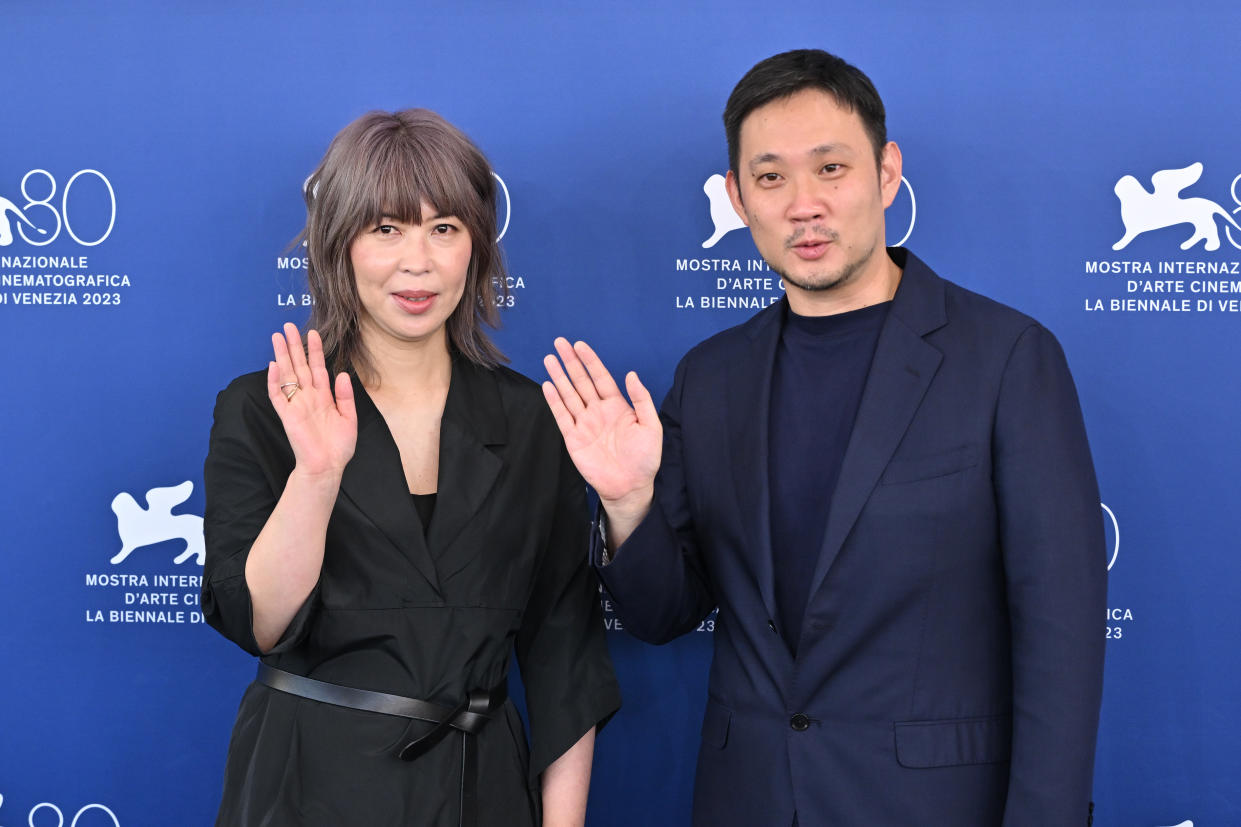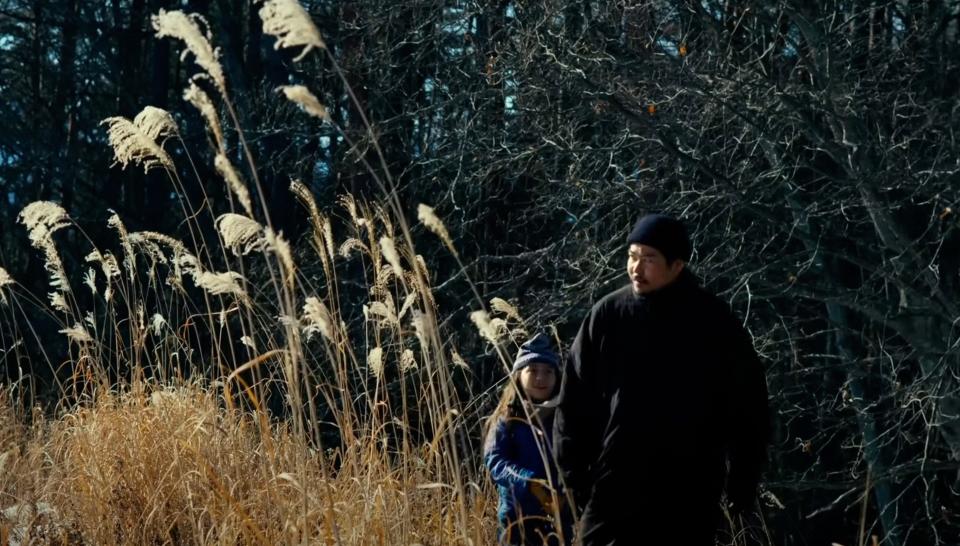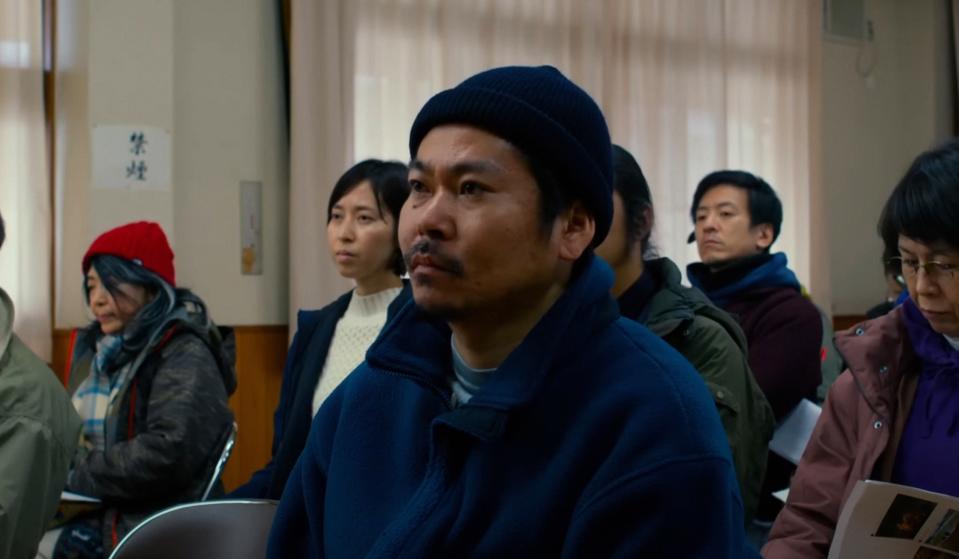Ryusuke Hamaguchi Remixed His Own Movie for a New (and Wordless) Twist on the Director’s Cut

- Oops!Something went wrong.Please try again later.
- Oops!Something went wrong.Please try again later.
More than ever, it’s hard to imagine a world where evil does not exist, so it should come as no surprise that the world captured in Ryusuke Hamaguchi’s film with that very same title feels out of step with our own.
“Evil Does Not Exist,” the Japanese auteur’s follow-up to “Drive My Car,” opens with a long shot that tracks through the forest, gazing up at the sky through intersecting branches that crisscross above. The pace is calm and unhurried, leisurely even, if not for the strings that accompany it. Ishibashi Eiko’s score, her second for Hamaguchi, is calming, too, at first. But then discordant notes gradually weave in, hinting at something darker under the melody and behind the trees. The longer this shot continues, the more eerie it feels, as if we’re gliding into another reality. Suddenly, it ends abruptly, jolting the audience into a different world where the rules don’t quite apply. Or at least, not in the ways you might expect.
More from IndieWire
The 13 Best Thrillers Streaming on Netflix in May, from 'Fair Play' to 'Emily the Criminal'
'Kingdom of the Planet of the Apes' Will Celebrate Performance Capture in Blu-ray Release
As “Evil Does Not Exist” unfolds, efforts to ground us in a reality like our own never quite sit right, not even in the film’s most banal moments, and that’s because it’s all building toward something otherworldly by the end, something primal that’s far removed from day-to-day life. Now, what if we told you that initial soundscape and the score that follows could pull you into yet another reality that’s very similar but wildly different still, one deliberately further out of touch with the already jarring world of “Evil Does Not Exist”?
Enter “Gift,” a daring new collaboration that started when Eiko reached out to Hamaguchi and asked if he could film new visuals for her upcoming live performances. The Japanese multi-instrumentalist has been pushing boundaries in form and genre for years, playing with everything from chamber pop to jazz improv across various mediums, so with their prior experience working together on “Drive My Car,” the ambitious duo were a natural fit to create something new that fuses film with Eiko’s unique take on live music.

The original footage Hamaguchi shot started out as a silent 30-minute short, which he eventually expanded into what we now know as “Evil Does Not Exist,” last year’s Grand Jury Prize winner at the Venice Film Festival. But that’s just one aspect of the project. Like “Evil Does Not Exist,” “Gift” also revolves around Takumi and Hana, a man and his daughter whose serene, rural village is disrupted by the impending construction of a glamping site. The exact same footage is used in this film, albeit via a more condensed 80-minute running time, but how it’s presented recontextualizes “Evil’s” original fable entirely.
While dialogue plays a key role throughout the Venice prize winner, especially in that tense, uneasy town meeting, “Gift” is a wordless counterpart where diegetic sound is subsumed almost entirely by Eiko’s score. Crucially, said score is performed by Eiko herself in person at each of the film’s rare global screenings. The result is far less story-led, although key instances of dialogue and even snippets of the plot’s description pop up in occasional title cards that help focus the film’s narrative in a similar vein to the silent movies of yesteryear. But if anything, “Gift” is looking forward rather than back, proposing an entirely new kind of cinematic experience where the director’s cut is reimagined as something more akin to a composer’s cut instead.

In “Evil Does Not Exist,” Eiko’s score already felt rather harmonious and at one with the film’s natural imagery and melancholic tone. Echoes of that ice-encrusted lake or tall pines piercing the landscape can be heard and felt throughout her music, which ebbs and flows like the rushing water or the wind rustling through trees. Yet in “Gift,” the composition is even more integral, perfectly synchronized with the cinematography and also Eiko’s own personal reaction to the story, which shifts and alters slightly in every performance due to the live nature of it all. The music isn’t just a character in and of itself in “Gift.” It’s an active narrator who guides us through a story where the ambiguity already integral to “Evil Does Not Exist” is heightened tenfold again.
What’s lost by removing Hamaguchi’s dialogue, which is especially riveting during that aforementioned town meeting and the car ride that follows, is gained elsewhere by using the same footage in a very different way. With some of the scenes removed, condensed, and reordered entirely, the story becomes harder to follow in “Gift,” but that’s the whole point. Even if you’ve already seen “Evil Does Not Exist,” that doesn’t matter because this is not the same story. It exists in a very similar, parallel world of sorts, but Eiko’s live score breathes new life into it, one which demands your attention over any attempts to make sense of what’s actually happening beyond your immediate emotional response.
That eerie atmosphere “Evil Does Not Exist” gradually builds toward is more pronounced throughout “Gift” because of its emphasis on feeling over narrative, giving audiences more space to consider the music’s intent and how those discordant undertones impact the story, especially when it comes to those horrifying last moments. In that regard, “Gift” is harder to understand yet far more congruent with the ending that these two films share, and that’s because it was always supposed to be deliberately ambiguous in a bid to unsettle the characters and audience alike. The stretches of silence periodically used throughout contribute to that effect as well. But in “Gift,” this void of sound is tangibly present in the space audiences share with Eiko, who pauses her work in the room to build more tension.

This live component ensures that those who experience “Gift” firsthand at New York’s Lincoln Center on May 1 and 2 may experience something slightly different than the Hong Kong International Film Festival performance that Indiewire joined on March 30, yet the two will still mirror each other in much the same way that “Gift” and “Evil” do. And therein lies the hypnotic appeal of Eiko and Hamaguchi’s bold new collaboration.
What started out as a one-off experimental endeavor between the pair challenges the notion of what a traditional director’s cut can be through this newfound emphasis on the creative power that composers also hold over visual storytelling. So who’s to say a project like “Gift” should remain a one-off? At a time when theaters are struggling to bring people in, this idea of a “composer’s cut” that remixes and reimagines pre-existing films in a live performance space has the potential to reinvigorate cinema, opening up new possibilities for theaters and film festivals alike. Whether that actually happens remains to be seen, especially as there will be logistical concerns to consider.
But even if “Gift” inspires just one or two filmmakers and composers to approach their storytelling in a new kind of way, Hamaguchi’s latest film will turn out to be a much-needed gift to the industry in more ways than one.
“GIFT: A Film by Ryusuke Hamaguchi X Live Score by Eiko Ishibashi” plays May 1 and 2 at the Walter Reade Theater at Film at Lincoln Center. “Evil Does Not Exist” opens in U.S. theaters May 3.
Best of IndieWire
The 13 Best Thrillers Streaming on Netflix in May, from 'Fair Play' to 'Emily the Criminal'
The Best Father and Son Films: 'The Tree of Life,' 'The Lion King,' and More
The 10 Best Teen Rebellion Films: 'Pump Up the Volume,' 'Heathers,' and More
Sign up for Indiewire's Newsletter. For the latest news, follow us on Facebook, Twitter, and Instagram.

